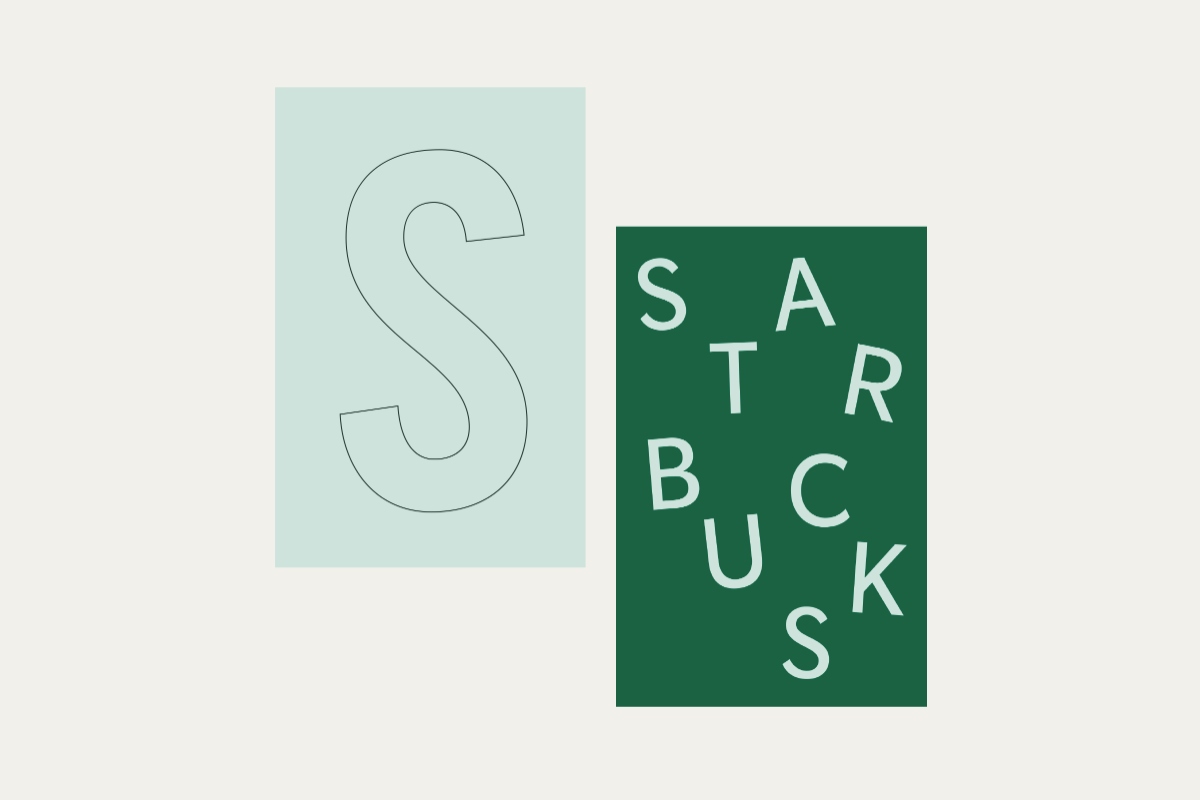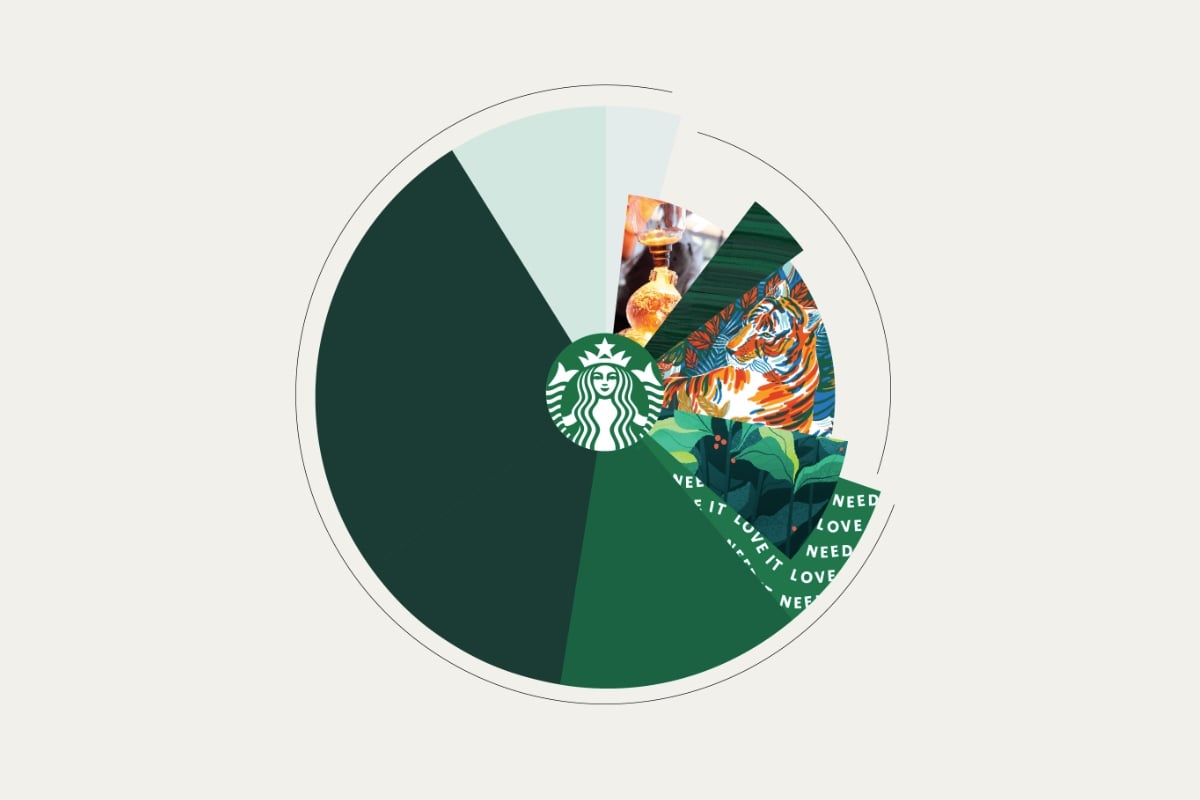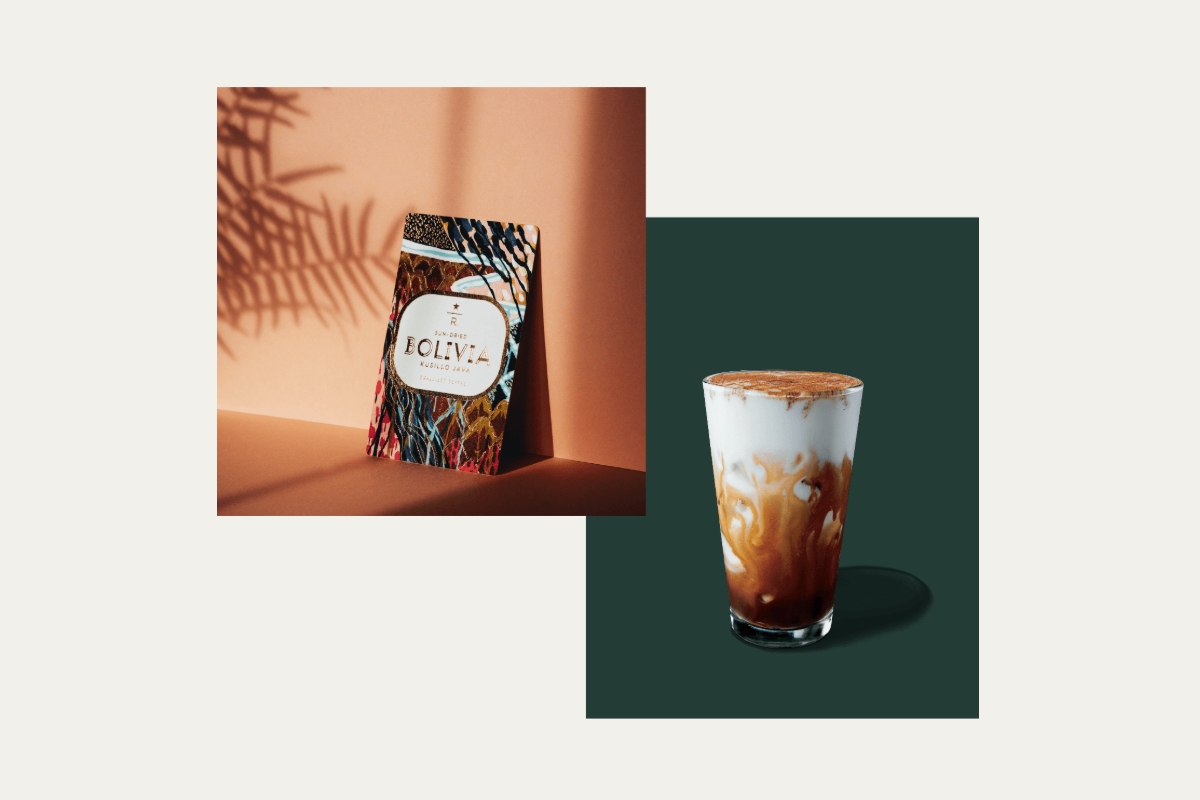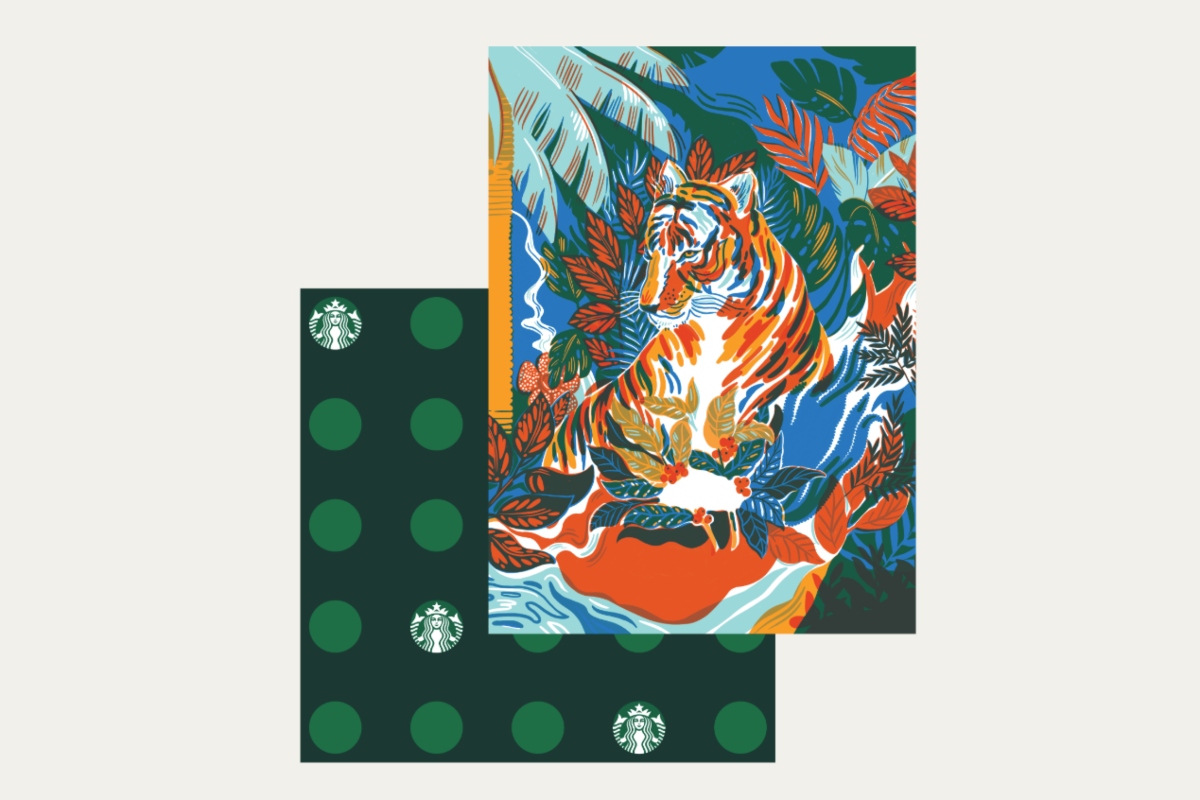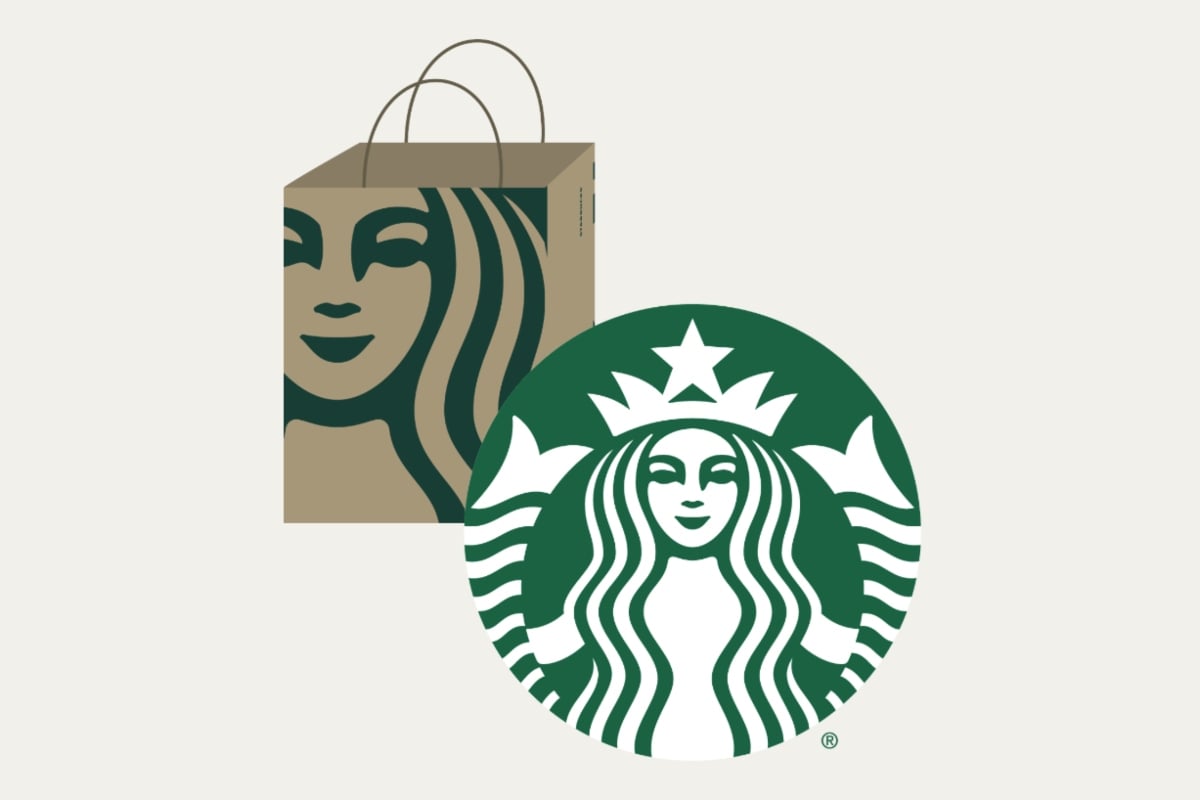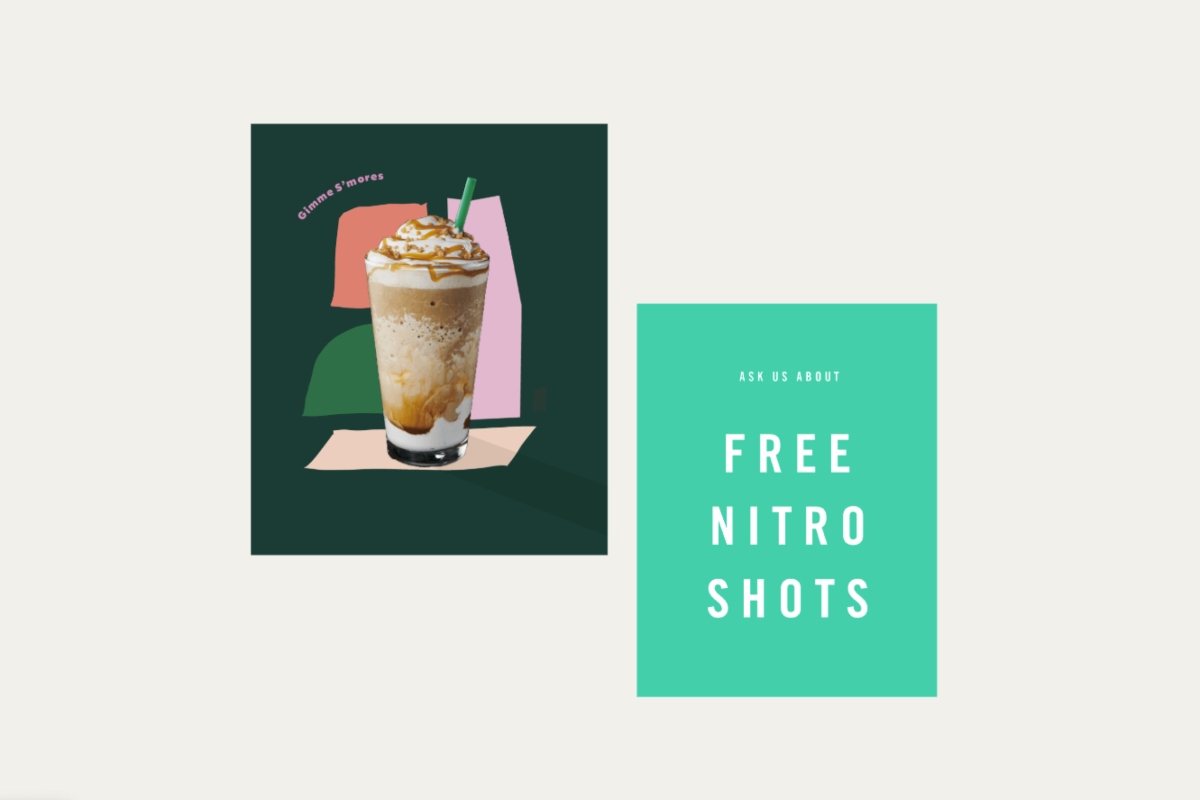Ever wondered what goes on behind the scenes of the world’s most iconic billion-dollar businesses? Well, wonder no more.
As the largest coffee retailer in the world, Starbucks has just made its full brand guidelines and creative process available to the public.
The company has always been very open about the ethical and sustainable sourcing of its coffee, but this marks the first time it has taken a deep dive into the inner workings of the brand.
Over the last year, the Starbucks creative team has been updating the brand system that’s responsible for everything from its in-store signage to its Instagram campaigns.
This is no small feat for a company with more than US$24 billion in revenue, 31,000 locations worldwide, frequently changing promotions, and menu items that vary regionally.
“We were just proud of the work and inspired by other brands being more transparent about their creative process,” explains Ben Nelson, Starbucks Creative Director.
Starbucks’ fresh new design system maintains the core elements of the brand – including the recognisable green siren logo – while keeping its customers’ experience central to creative expression.
“We’re thoughtfully incorporating beautiful, expressive moments with calm confidence in ways that are optimistic, joyful and recognisably Starbucks,” says the company.
“By consistently utilising the Siren logo, an expanded palette of greens rooted in our iconic green apron and a constrained family of harmonious typefaces, we bring purpose and cohesion to every interaction customers have with our brand.
“From farmers, roasters and baristas to writers, designers and illustrators, we believe in the power of both coffee and art to connect people and communities.”
Starbucks developed two new typefaces, restructured its menu board to make it more functional, and saved the creative expression and illustration for its merchandise.
“We were just proud of the work and inspired by other brands being more transparent”
But Starbucks is not alone – global brands such as Uber and Netflix have also taken similar approaches to publicly revealing their brand identities, from detailing their brand story to explaining the meaning behind each design element.
For instance, we now know that the ‘N’ in Netflix represents the “connection and a never-ending stream of stories” to the site’s subscribers.
Fast-food chain McDonald’s has also joined the ranks of businesses embracing the idea of transparency. After the successful launch of its ‘Our Food. Your Questions’ campaign in Canada in 2014, McDonald’s implemented it across the US last year.
By curating crowd-sourced customer questions in a dedicated section of its website, McDonald’s has responded to questions about everything from the use of fillers and preservatives in its beef patties to the ingredients that go into making its classic soft serve ice cream.
The transparency campaign comes after years of misinformation and disparaging urban myths surrounding McDonald’s food and ingredients.
Today’s customers are empowered by choice and information and therefore have greater expectations when it comes to transparency from their favourite brands.
Whether it means revealing creative processes or being open and honest about products and sourcing, brands must continue along the road to transparency if they wish to sustain consumer loyalty going forward.
Read next: Meet the brains behind Earth’s leading unicorns worth over US$1 trillion


